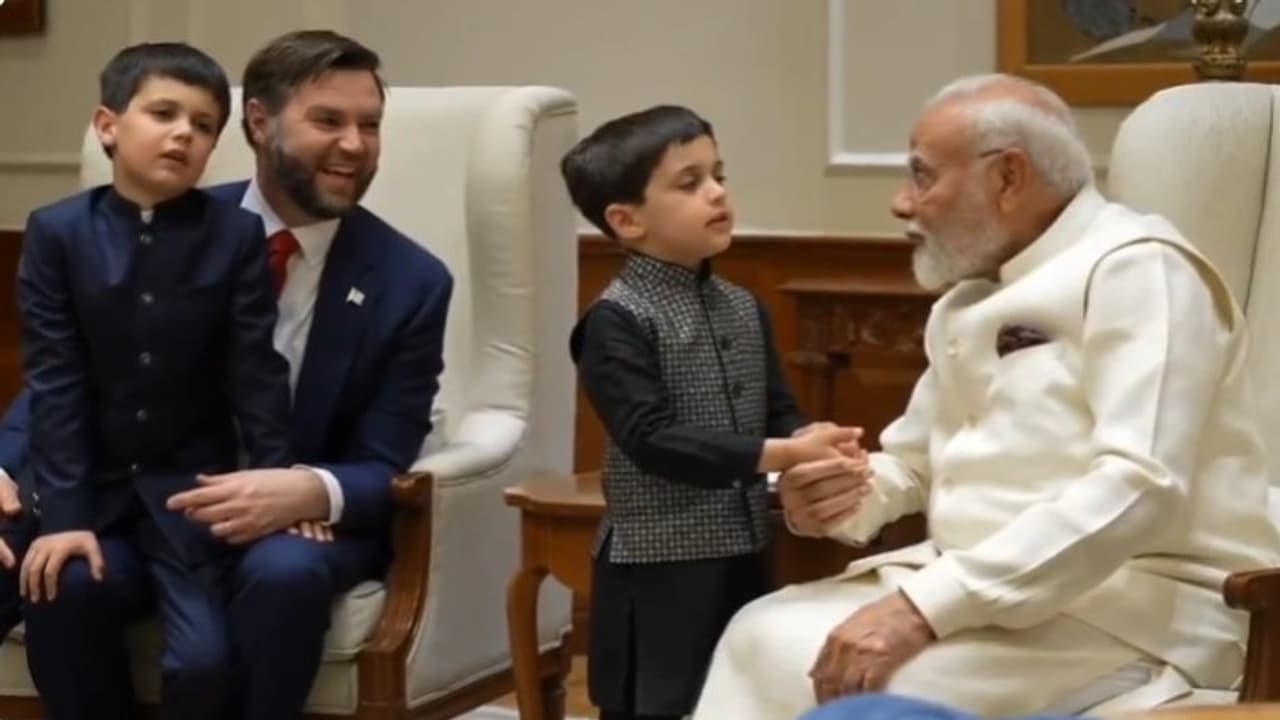Prime Minister Modi met US Vice President JD Vance in New Delhi to review bilateral ties, including trade, defence, and strategic technologies. Both sides reaffirmed shared goals ahead of President Trump’s anticipated visit to India.
Prime Minister Narendra Modi on Monday evening hosted the Vice President of the United States JD Vance, along with Second Lady Usha Vance, their children, and senior members of the US Administration in New Delhi.

The high-profile meeting marked a key moment in the ongoing efforts to deepen the India-US strategic partnership and strengthen cooperation across a range of sectors.
The visit comes as part of the Vice President's multi-day tour of India, which includes cultural engagements and high-level meetings in New Delhi and Agra. The Vance family's planned visit to the Taj Mahal has already sparked a wave of interest on social media, but today's formal talks between the two leaders underscored the substantive and expanding scope of Indo-U.S. relations.
Welcoming the Vice President and his family, Prime Minister Modi fondly recalled his own visit to Washington D.C. earlier this year, in January, where he held extensive discussions with President Donald Trump. “Those discussions laid a strong foundation for our partnership, leveraging the shared visions of 'Make America Great Again' and 'Viksit Bharat 2047',” the Prime Minister said during the meeting.
Both leaders noted the continued momentum in bilateral ties since their last meeting in Paris this February, where they agreed to fast-track cooperation in key areas. Today’s discussions saw a positive review of developments in trade, energy, defence, and emerging technologies.
A key highlight of the talks was the ongoing negotiation of the India-U.S. Bilateral Trade Agreement, which both sides described as “mutually beneficial and people-centric.” The proposed deal aims to boost economic growth, enhance market access, and remove long-standing trade barriers between the world’s two largest democracies.
“The trade agreement is not just about tariffs and goods,” a senior official from the Indian Ministry of External Affairs noted. “It reflects a broader convergence on supply chain resilience, technology transfer, and equitable development.”
Both sides also welcomed growing collaboration in energy security and clean technologies. The Vice President appreciated India's efforts to scale up renewable energy and transition towards a low-carbon economy, while reaffirming US support for India's climate goals under the Paris Agreement.
In defence and strategic technologies, the leaders discussed ongoing joint projects and underlined the importance of technology co-development and co-production under the India-U.S. Initiative on Critical and Emerging Technologies (iCET). These include cooperation in semiconductors, quantum computing, 5G and 6G communications, and artificial intelligence.
Beyond bilateral issues, Modi and Vance exchanged views on a number of regional and global developments, including the Indo-Pacific, West Asia, and the ongoing conflicts in Eastern Europe. They reiterated their commitment to dialogue, diplomacy, and rule-based international order.
“The Prime Minister and Vice President Vance share a clear understanding of the evolving global landscape,” an official from the US delegation stated. “Their engagement today reflected a deep convergence on maintaining peace, ensuring economic stability, and protecting democratic values.”
Before concluding the meeting, Prime Minister Modi extended his warm wishes to the Vice President, Second Lady, and their children for a pleasant and memorable stay in India. He also conveyed greetings to President Donald Trump and expressed his anticipation of welcoming the President to India later this year.
The visit of Vice President Vance, seen as one of the most influential figures in the Trump administration, signals Washington’s continued strategic focus on its partnership with India. With shared goals across economic, security, and technological domains, today's meeting reaffirmed the growing alignment between New Delhi and Washington, promising a new chapter in one of the 21st century’s most consequential bilateral relationships.


